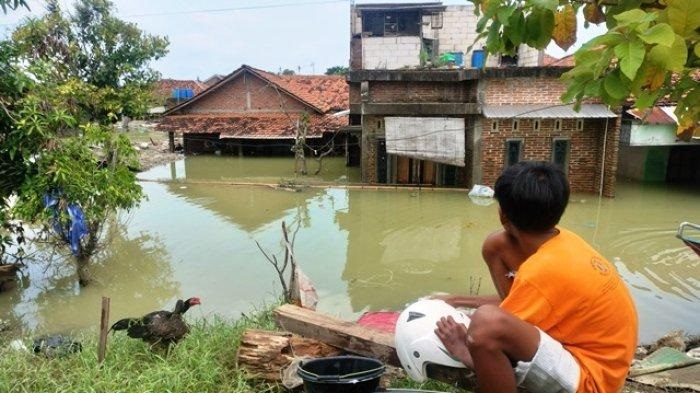
Flooding has affected several areas in Demak Regency, Central Java, and its surrounding areas. The floods have been spreading further in the past few days. This recent flood disaster has been linked to the reappearance of the Muria Strait.
Dr. Salahuddin Husein, a Geology Engineering lecturer from the UGM Faculty of Engineering (FT UGM), stated that the Muria Strait in Central Java would not reappear.
Although from a geological aspect, the regions of Demak, Juwana, and Pati were originally part of the Muria Strait, which transformed into low-lying areas around the 10th to 15th centuries.
“The formation of these areas was due to sediment carried during repeated floods,” he explained on Monday (Mar. 25).
He mentioned that the Muria Strait would not resurface due to geological processes like the erosion of the Kendeng and Rembang Hill Ridges by the networks of the Tuntang River, Serang River, and Juwana River still ongoing to this day, carrying significant sediment. This condition has led to the silting up of the Muria Strait.
“It’s natural for floods to recur. This is not unusual because these low-lying areas were formed due to flood overflows,” he clarified.
Dr. Husein explained that the sedimentation process of rivers generally occurs during floods, where sediment deposits accumulate as floodplains.
The areas of Demak, Pati, and Juwana are low-lying areas resulting from flood sedimentation from the Tuntang, Serang, and Juwana Rivers. In other words, the disappearance of the Muria Strait and its transformation into low-lying areas today is due to floods from these three rivers.
“Geologically, there’s no need to worry that Demak and its surroundings will become a sea again because these recurring floods bring sediment that forms low-lying areas,” he stated.
Furthermore, he mentioned environmental changes, especially land use changes due to urban growth, significantly impact the former low-lying Muria Strait area geologically.
One of the geological impacts is land compaction for building construction and groundwater use, making the soil compact, dense, and somewhat subsiding.
This situation makes areas like Demak, Pati, and Juwana vulnerable to floods, especially amid the increasing hydro-meteorological disasters currently occurring.
Dr. Husein added that heavy and continuous rainfall could increase water discharge in upstream river areas. This could result in extreme flooding that persists for days.
To anticipate extreme flooding in Demak and its surroundings, Dr. Husein believes the government needs to reassess dike capacity adjusted to potential extreme flood scenarios. This way, it is hoped that the rivers can handle a larger water discharge without causing floods.
“River normalization efforts have been conducted, but redesigning based on current conditions is necessary for the future,” he suggested.
Moreover, Dr. Husein mentioned the importance of regular monitoring and maintenance of dikes. This step is expected to prevent dike collapses at several points that could lead to river siltation, which will reduce dike capacity.
Author: Ika
Photo: Tribunjateng/Rezanda Akbar

